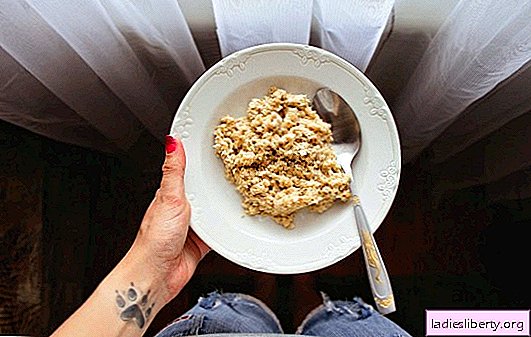
Ruptures of the uterus, cervix and perineum are one of the most common complications during childbirth.
It can be either spontaneous or due to the intervention of doctors.
In those who give birth for the first time, breaks occur more often 3 times than in multiparous.
This is primarily due to the inexperience of the woman in childbirth.
Why breaks occur, can they be avoided and how to do it?
Gaps in childbirth - causes and types
None of the doctors will be able to completely say whether there will be gaps or not. In most cases, the fault is the inexperience and unpreparedness of a woman. At peak moments, she loses her temper, gives in to panic and ceases to obey the doctor. However, there are times when even experienced and well-prepared women are given breaks. There are many reasons for this. Before we talk about them, let's look at what gaps are generally.
Conventionally, they can be divided into three types:
● uterine rupture;
● cervical rupture;
● perineal rupture (damage resulting from severe distension of the birth canal).
There are a lot of factors that lead to a gap during childbirth. Among the common ones:
● inflammatory processes (chronic or in the stage of exacerbation);
● genital infections (eg, thrush);
● inexperience of the woman in childbirth (in most cases, a woman simply does not listen to the doctor and gives in to panic);
● too fast delivery (with rapid advancement of the fetus through the birth canal);
● sluggish labor (the perineum swells, and when exposed to hormones, the cervix ruptures);
● Mature age of the woman in labor;
● repeated birth after cesarean section;
● carelessness of medical workers (for example, when pulling a child);
● tone of the uterus and pelvic muscles;
● physiological feature (when the distance from the vagina to the anus is more than 7 cm).
Rupture of the uterus during childbirth: treatment, consequences
Rupture of the uterus during delivery does not happen often. This type of tearing is the hardest. It can arise for the following reasons:
● functional obstacles that violate the normal movement of the fetus through the birth canal (narrow pelvis, dystocia of the cervix);
● mechanical obstruction (large fetus, abnormalities of the uterus);
● repeated birth after a cesarean section, abortion, or a few previous births;
● obstetric factor (extension of the fetus, application of forceps);
● abdominal injuries;
● sluggish delivery;
● stimulation of childbirth when this is not necessary.
Uterine ruptures are divided into several types, depending on the location, course and nature of the damage.
The localization of the gap can be in:
● mother’s bottom;
● the body of the uterus;
● lower segment;
● also rarely, but there is a complete separation of the uterus from the arches.
uterine rupture may be:
● in the form of a crack;
● incomplete, that is, not penetrating into the abdominal cavity;
● full.
The clinical picture begins with the threat of uterine rupture, then goes into the process that has begun, after which (if measures were not taken or were unsuccessful), the rupture is considered perfect.
How to treat
If the uterus ruptured during delivery, the doctors are faced with the task: to do everything possible for an early outcome of childbirth in order to save the baby and stop the bleeding in the mother.
With a complete rupture of the uterus, an emergency cesarean section is done to the woman in childbirth. After removing the baby, the uterus is stitched and the blood stops.
What is the danger
Uterine rupture can adversely affect both the fetus and the mother. If it is not detected in time, the fetus may die in the womb due to acute oxygen starvation (hypoxia). Mom, in turn, may begin hemorrhagic shock caused by large blood loss. The functioning of the nervous system and blood circulation may be disturbed.
How to avoid
Preventive measures to be taken to avoid uterine rupture during childbirth:
● regular visits to the obstetrician-gynecologist;
● passing all planned ultrasounds for early detection of factors that may affect the gap;
● the correct and timely choice of delivery;
● monitoring the condition of the fetus, especially if it is heavy;
● Diagnosis and monitoring of a threatening or ongoing rupture of the uterus.
Cervical rupture during childbirth: treatment, consequences
Rupture of the cervix is a phenomenon that often accompanies childbirth. The gap can be spontaneous (for example, if the mother has a large fetus, a narrow pelvis or a quick delivery) and violent (operations aimed at accelerating the birth).
Doctors divide the rupture of the cervix into several degrees:
1. a gap, the size of which is not more than 2 cm, is located on one or both sides;
2. the size of the gap is more than 2 cm, but does not reach the vaginal arches;
3. a gap that comes and goes to the vaginal arches.
The first two degrees are considered uncomplicated cervical tears. In the latter case, the damage will be considered complicated. It touches the internal uterine pharynx, abdominal and pelvic cavity. Also, a third-degree rupture can touch the fat layer located around the uterus.
How to treat
Rupture of the cervix is treated with surgery:
● defects are sutured (in rare cases, this may not be necessary - with necrotic and superficial wounds);
● surgery to open the abdominal cavity (used for rupture of the third degree, the defect is sutured directly in the uterus).
What is the danger
Such birth gaps can have serious consequences:
● neck inflammation;
● inflammation of the uterine mucosa (postpartum endometritis);
● hematoma in the fatty layer of the uterus;
● hemorrhagic shock (disruption of the nervous system, blood circulation).
How to avoid
To avoid cervical rupture, it is necessary to adhere to some rules:
● eliminate excessive physical and emotional stress;
● timely register and regularly visit the gynecologist;
● undergo all necessary tests and examinations in order to detect possible violations in time;
● plan pregnancy not earlier than two years after operations on the uterus (if any);
● intake of vitamins and sedatives (only as directed by the supervisor);
● timely assessment of indications for natural or artificial childbirth;
● moderate pain relief during childbirth.
Perineal rupture during childbirth: treatment, consequences
Rarely, childbirth goes smoothly and without gaps. Most often, the perineum is damaged. This gap is an extension of the birth canal due to strong pressure on the pelvic muscles. Often, this type of trauma in childbirth depends on the preparedness of the woman in labor for this process.
Perineal rupture during childbirth is divided into 3 degrees, depending on the nature of the damage:
1. Damage only to the skin of the perineum.
2. Damage to the skin, muscles of the perineum and the walls of the vagina.
3. Damage to the third degree can be incomplete, complete and central. In the first case, in addition to the skin, muscles and walls of the vagina, the muscle that closes the rectum is damaged. With a complete rupture, the rectal walls rupture. Central rupture of the perineum during childbirth is very rare and is characterized by damage to the posterior vaginal wall, pelvic muscles and perineal skin. In this case, both the posterior commissure and the circular muscle of the rectum remain intact.
How to treat
Perineal tears should be sutured immediately after damage (no more than half an hour should pass). This is done under local anesthesia. Sutures can be superimposed temporary (which must then be removed) or self-absorbable.
During the week, twice a day, stitches must be treated with antiseptics. If temporary were imposed, then they are removed for 4-5 days.
So that the seams do not part, the young mother is not recommended to sit down for 2 weeks.
What is the danger
Crotch ruptures deliver a lot of trouble and pain to a young mother. It can be:
● hematomas and edema in the area of sutures;
● malfunctioning urination;
● inflammation of the joints with suppuration;
● scar formation on the perineum;
● loss of sensitivity in the area of damage;
● discrepancy of seams;
● disruption of the rectum.
How to avoid
For the birth to go smoothly and without breaking the perineum, it is necessary to properly prepare physically and mentally for the birth. In most cases, tears occur when a woman does not listen to the obstetrician. No matter how scary it is, you need to be able not to lose your temper and follow all the doctor's instructions - he is also interested in the successful outcome of the birth.
Starting from about 7 months of pregnancy, you need to do a crotch massage. Also, muscle training (Kegel exercises) will not be superfluous: alternating squeezes and relaxation.
It will not be superfluous for the expectant mother to attend several classes in breathing exercises and relaxation skills during childbirth.
Conclusion
Gaps in childbirth are quite common. Can they be avoided? It is impossible to answer this question unequivocally, but it is worth remembering that a lot depends on the woman and on how she is ready to follow all the doctor’s instructions.
To avoid gaps, the expectant mother must do everything possible for her part. First of all, consciously prepare for the birth process. Be sure to find out how the process of giving birth to a baby occurs, where it starts, how to breathe and relax properly. The more a woman knows about the normal course of labor, the more she will be prepared.
If it was not possible to avoid gaps, it is worth knowing that the risk of complications or infection will be high. It is necessary to strictly observe the rules of personal hygiene and seam care. At the slightest change in the area of sutures - edema, suppuration, pain, twitching - you must immediately consult a doctor.











